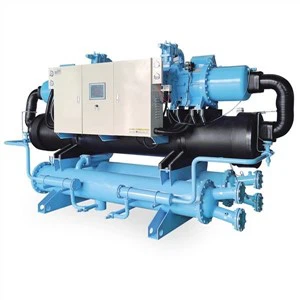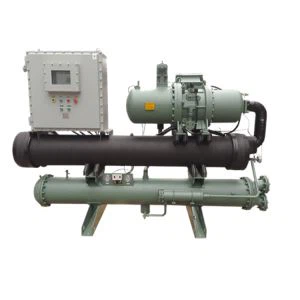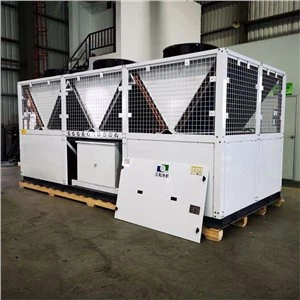Heat exchangers are essential components in various industrial processes, from power generation to chemical processing, and even in everyday applications like air conditioning and refrigeration. As a heat exchanger supplier, understanding the formulas used to calculate the heat transfer rate is crucial for designing efficient and effective heat exchange systems. In this blog post, we'll explore the key formulas and concepts involved in heat transfer rate calculations.
Understanding Heat Transfer
Before diving into the formulas, it's important to understand the basic principles of heat transfer. There are three main modes of heat transfer: conduction, convection, and radiation. In most heat exchangers, conduction and convection are the primary modes of heat transfer.
Conduction is the transfer of heat through a solid material or between two solids in direct contact. It occurs due to the movement of electrons and molecular vibrations within the material. The rate of conduction heat transfer is governed by Fourier's Law, which states that the heat transfer rate (Q) is proportional to the temperature difference (ΔT) across the material, the cross - sectional area (A) through which heat is transferred, and the thermal conductivity (k) of the material, and inversely proportional to the thickness (L) of the material. The formula for conduction heat transfer is:
[Q = - kA\frac{dT}{dx}]
In the context of a heat exchanger, we often deal with a more simplified form when considering a flat wall with a constant temperature difference across it:
[Q=\frac{kA\Delta T}{L}]
Convection is the transfer of heat between a solid surface and a moving fluid (liquid or gas). It involves both the movement of the fluid and the conduction of heat at the fluid - solid interface. The rate of convection heat transfer is given by Newton's Law of Cooling:
[Q = hA\Delta T]
where (h) is the convective heat transfer coefficient, (A) is the surface area of the solid in contact with the fluid, and (\Delta T) is the temperature difference between the solid surface and the bulk fluid.
Overall Heat Transfer Coefficient
In a heat exchanger, heat is transferred from one fluid to another through a separating wall. The overall heat transfer coefficient (U) takes into account the combined effects of conduction through the wall and convection on both sides of the wall. The overall heat transfer rate in a heat exchanger can be expressed as:


[Q = UA\Delta T_{lm}]
where (A) is the heat transfer area and (\Delta T_{lm}) is the log - mean temperature difference.
The overall heat transfer coefficient (U) is related to the individual convective heat transfer coefficients ((h_1) and (h_2)) on the two sides of the wall and the thermal resistance of the wall ((R_{wall})) by the following formula:
[\frac{1}{U}=\frac{1}{h_1}+\frac{L}{k}+\frac{1}{h_2}]
where (L) is the thickness of the wall and (k) is its thermal conductivity.
Log - Mean Temperature Difference (LMTD)
The log - mean temperature difference ((\Delta T_{lm})) is used to account for the variation in temperature difference between the two fluids along the length of the heat exchanger. For a counter - flow heat exchanger, where the two fluids flow in opposite directions, the formula for (\Delta T_{lm}) is:
[\Delta T_{lm}=\frac{\Delta T_1-\Delta T_2}{\ln(\frac{\Delta T_1}{\Delta T_2})}]
where (\Delta T_1) and (\Delta T_2) are the temperature differences between the two fluids at the two ends of the heat exchanger.
For a parallel - flow heat exchanger, where the two fluids flow in the same direction, the same formula for (\Delta T_{lm}) applies, but the values of (\Delta T_1) and (\Delta T_2) are defined differently based on the inlet and outlet temperatures of the fluids.
Heat Transfer Rate Based on Energy Balance
Another way to calculate the heat transfer rate in a heat exchanger is based on the energy balance of the two fluids. The heat lost by the hot fluid must be equal to the heat gained by the cold fluid (assuming no heat losses to the surroundings).
The heat transfer rate can be calculated using the following equations for the hot and cold fluids:
For the hot fluid: (Q = m_hC_{p,h}(T_{h,in}-T_{h,out}))
For the cold fluid: (Q = m_cC_{p,c}(T_{c,out}-T_{c,in}))
where (m_h) and (m_c) are the mass flow rates of the hot and cold fluids respectively, (C_{p,h}) and (C_{p,c}) are the specific heat capacities of the hot and cold fluids at constant pressure, and (T_{h,in}), (T_{h,out}), (T_{c,in}), and (T_{c,out}) are the inlet and outlet temperatures of the hot and cold fluids.
Applications in Different Types of Heat Exchangers
As a heat exchanger supplier, we offer a wide range of heat exchangers, including Titanium Shell and Tube Evaporator, Seawater Shell and Tube Heat Exchanger, and Shell and Tube Condenser Heat Exchanger.
In a shell - and - tube heat exchanger, the tubes carry one fluid while the shell side contains the other fluid. The overall heat transfer rate calculation using the overall heat transfer coefficient and log - mean temperature difference is commonly used for sizing and designing these heat exchangers. The design process involves determining the appropriate values of (U), (A), and (\Delta T_{lm}) based on the properties of the fluids, flow rates, and temperature requirements.
For an evaporator, such as the titanium shell - and - tube evaporator, the heat transfer rate calculation is crucial for ensuring efficient evaporation of the liquid. The heat transfer is driven by the temperature difference between the heating medium and the liquid to be evaporated. The overall heat transfer coefficient takes into account the boiling process on the tube side and the convective heat transfer on the shell side.
In a condenser, like the shell - and - tube condenser heat exchanger, the heat transfer rate is related to the condensation of the vapor. The heat released during condensation is transferred to the cooling medium. The energy balance equations and the overall heat transfer rate formula are used to design and optimize the performance of the condenser.
Conclusion
Calculating the heat transfer rate in a heat exchanger is a complex but essential task for designing efficient and reliable heat exchange systems. The formulas for conduction, convection, overall heat transfer coefficient, log - mean temperature difference, and energy balance provide a framework for understanding and quantifying the heat transfer process.
As a heat exchanger supplier, we use these formulas to customize heat exchangers to meet the specific needs of our customers. Whether you need a Titanium Shell and Tube Evaporator, a Seawater Shell and Tube Heat Exchanger, or a Shell and Tube Condenser Heat Exchanger, we have the expertise to design and supply high - quality heat exchangers.
If you are in the market for a heat exchanger and want to discuss your requirements in detail, we encourage you to contact us for a personalized solution. Our team of experts is ready to assist you in choosing the right heat exchanger and ensuring its optimal performance.
References
- Incropera, F. P., DeWitt, D. P., Bergman, T. L., & Lavine, A. S. (2007). Fundamentals of Heat and Mass Transfer. John Wiley & Sons.
- Holman, J. P. (2002). Heat Transfer. McGraw - Hill.
- Kakac, S., & Liu, H. (2002). Heat Exchangers: Selection, Rating, and Thermal Design. CRC Press.






